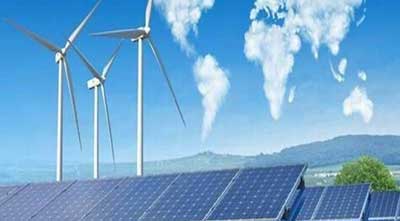Date: 10/01/2023
Relevance: GS-3: Science and Technology- developments and their applications and effects in everyday life.
Key Phrases: Renewables, Energy Storage, Non-Fossil Fuel, Lithium-Ion, Electricity, Demand Cycle, Alternatives, Constraints, Intermittency, Pumped-Storage Hydroelectric Plants.
Context:
- On an average there is monthly addition of around 1,000 megawatt power (that is around five times the amount of power a 250 MW nuclear plant produces) from non-fossil fuels or renewables to the electricity grid.
- To operationally sustain it, policy makers are of the view that India needs to urgently work on developing viable energy storage options.
Key Highlights:
- India, which is the world’s third largest producer of renewable energy, nearly 40 per cent of installed electricity capacity comes from non-fossil fuel sources.
- This green push has resulted in a sharp 24 per cent reduction in emission intensity of GDP between 2005 and 2016, but it has also thrown up challenges of a grid being increasingly powered by renewables.
The Renewables Challenge:
- The Lithium-ion storage battery option for grid application is now being ruled out as unviable.
- The renewables challenge is compounded by the fact that SECI (Solar Energy Corporation of India Ltd) which conducts solar auctions has locked a number of contracts in rigid PPAs (power purchase agreements) with no scope for innovation.
- Energy storage is needed alongside green energy sources to primarily balance out the variability in renewable generation as electricity is generated only when the sun shines or when the wind blows. This is not always in sync with the demand cycle
- For procurers such as state-owned discoms, renewables are not always a viable option precisely due to unpredictability in the generation trends.
- This means they still have to depend on thermal or nuclear generation for meeting base load demand. Renewables bundled with a viable storage option help overcome this problem.
Key constraints:
- The main challenge is non-availability of natural gas to run gas turbines to complement the growing RE capacity.
- India’s vast fleet of coal-based power plants of 200 MW series is more than 25 years old, runs on old technology and does not promise robust reliability.
- There is the need to replace obsolete coal-based plants with supercritical highly-efficient coal-based plants as an intermediate goal for total transition. However, this may not be acceptable to the international community in view of the impending climate crisis.
- The country’s current installed generation capacity is 404 GW while the maximum demand is around 215 GW. Of the installed capacity, the total electric power installed capacity from non-fossil fuel-based energy resources is 42.3 per cent of the total electric power installed capacity, primarily solar and wind.
- To compensate for the intermittency, pumped-storage hydroelectric plants –are being seen as the most viable alternative.
What Is “Intermittency” In Renewable Energy?
- Renewable energy cannot always consistently produce energy at all hours of the day, this is called intermittency.
- For instance, Solar and wind farms energy production in Europe have been known to fluctuate between 0 to 23 and 24GW of energy respectively during peak times. While these peak production periods provide a large share of energy, the sometimes unpredictable breaks are what define the intermittency of renewables.
How pumped-storage hydroelectric plants works?
- It stores energy in the form of the gravitational potential energy of water that is generally pumped from a lower elevation reservoir to a higher elevation reservoir when renewable power is available.
- Then it is released to move a turbine to generate electricity when renewable generation is not available.
The Alternatives:
- There are two alternatives being considered by the government now, hydrogen and hybrid generation models blended with off-stream pumped storage.
- In 2023, as the hidden challenges of RE (Renewable Energy) transition are likely to manifest more concretely, the government is making a renewed push on both technologies.
- A policy for stepping up green hydrogen production and tapping into its potential as a fuel has been cleared by the cabinet.
- The Union Ministry of Power has also wrapped up a survey of all pumped hydro sites and hydro PSUs have been given a target of taking up pumped hydro schemes.
- The Ministry of Power has also written to the Union Coal Ministry to consider the option of opencast mines as potential sites for pumped hydro in the future.
Conclusion:
- Pumped-storage hydroelectric plants thereby work similarly to a giant battery, because they can store power and then release it when needed.
- Need of the hour is to reduce the percentage of coal-based capacity by closing the inefficient fleet and yet add new flexible capacity to meet load requirements.
- There should also be provision to convert coal-based capacity to a fuel mix of gas and hydrogen.
Source: The Indian Express.
Mains Question:
Q What Is “Intermittency” In Renewable Energy? Also discuss the challenge associated with it. (150 words).






















